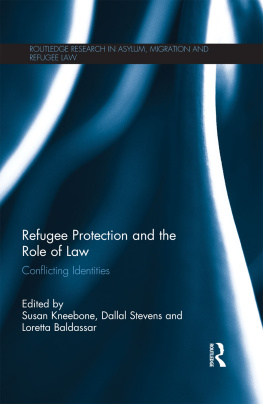
C OME
C LOSER
On Love and Self-Protection
I LSE S AND

Jessica Kingsley Publishers
London and Philadelphia
First published by Forlaget Ammentorp, Denmark in 2014
English language edition first published in 2017
by Jessica Kingsley Publishers
73 Collier Street
London N1 9BE, UK
and
400 Market Street, Suite 400
Philadelphia, PA 19106, USA
www.jkp.com
Copyright Ilse Sand 2017
English language edition translated by Russell Dees
All rights reserved. No part of this publication may be reproduced in any material form (including photocopying, storing in any medium by electronic means or transmitting) without the written permission of the copyright owner except in accordance with the provisions of the law or under terms of a licence issued in the UK by the Copyright Licensing Agency Ltd. www.cla.co.uk or in overseas territories by the relevant reproduction rights organisation, for details see www.ifrro.org. Applications for the copyright owners written permission to reproduce any part of this publication should be addressed to the publisher.
Warning: The doing of an unauthorised act in relation to a copyright work may result in both a civil claim for damages and criminal prosecution.
Library of Congress Cataloging in Publication Data
Names: Sand, Ilse, author.
Title: Come closer : on love and self-protection / Ilse Sand.
Description: London ; Philadelphia : Jessica Kingsley Publishers, 2017. | Includes bibliographical references.
Identifiers: LCCN 2017013113 (print) | LCCN 2016054757 (ebook) | ISBN 9781784506032 (ebook) | ISBN 9781785922978 (alk. paper)
Subjects: LCSH: Self-protective behavior. | Interpersonal relations. | Intimacy (Psychology)
Classification: LCC BF697.5.S45 (print) | LCC BF697.5.S45 S26 2017 (ebook) | DDC 158.2--dc23
British Library Cataloguing in Publication Data
A CIP catalogue record for this book is available from the British Library
ISBN 978 1 78592 297 8
eISBN 978 1 78450 603 2
C ONTENTS
P REFACE
In my time as a pastor and, later, as a psychotherapist, I have talked to many people who have been hurt by love if they have been lucky enough to find someone to love.
I have learned in connection with my lectures on love and self-protection that there is great interest in becoming wiser about the psychological mechanisms at play in our relationships both when we form them and in their everyday interactions.
In this book, I describe how self-protection strategies arise, how they can stand in the way of good, close relationships, and how undesirable strategies can be dismantled.
I have learned how relationships can become deeper and more meaningful if we dare to be fully present in the moment in all our vulnerability, shed of unnecessary armour.
The literature on this topic in which I have steeped myself was written for professionals. However, the present book is written in more accessible language that can be read by anyone. At the same time, it is solidly anchored in recognised psychological theories and many years of therapeutic experience.
The many specific examples in the book are, for the most part, invented for instructive purposes but contain situations and remarks I often encounter in my practice. Some of the examples are authentic and retold anonymously with permission from the relevant client.
It is my hope that this knowledge, which I have seen make a difference for clients and myself, will benefit a much wider audience far beyond those who read the professional literature or are in treatment.
I NTRODUCTION
Why dont we all live in vibrant, loving relationships with other people? Why do so many people live alone or in relationships that lack closeness and a genuine concern for one another?
There may be different answers to this. One of them is that we use self-protection strategies to trick ourselves and trip ourselves up in love.
Anyone who works in psychotherapy is familiar with self-protection strategies. Clients use various strategies to distance themselves from other people, to avoid looking hard at their own lives, or to suppress their own inner feelings, thoughts, knowledge or desires.
These strategies have been called different things over the years. Freud called them defence mechanisms ( abwerf ). Cognitive therapy works with the concept of coping strategies, which sometimes describes the same observations.
Even Sren Kierkegaard, who formulated his ideas more than half a century before Freud, noticed the phenomenon. He wrote that human beings have a peculiar ability to muddle up their own knowledge (Kierkegaard 1989). How they actually do that Kierkegaard did not dwell on. We know more about it today.
I have chosen to call these manoeuvres through which we sometimes muddle up the most obvious things or keep other people and our own inner selves at a distance self-protection strategies. By this, I mean everything a human being does (consciously or, more often, unconsciously) to avoid closeness with other people or his or her own internal or external reality.
Self-protection may also entail such things as quitting smoking or putting on a lifejacket while at sea. The self-protection strategies in which I am interested in this book, however, are those we use to distance ourselves from reality. Sometimes, this may be advantageous. At other times, it may become a problem.
Self-protection is good if it allows you to distance your-self from your feelings when they become overwhelming. But this same self-protection strategy can become a problem if it is inflexible and allowed unconsciously (either entirely or only partially) to take on a life of its own.
Our quality of life and our vitality are affected when we create more distance to our inner lives than is necessary. And when we distance ourselves from the realities of our actual life situation, we do not see them clearly, and our lives become difficult to navigate.
One self-protection strategy, for example, may be using your imagination to reshape external reality, so you see yourself, other people or your opportunities as better or worse than they realistically are. Another, more concrete example may be when you fail to breathe deeply enough really to feel yourself.
A self-protection strategy is a tactic that was once a shrewd solution to a difficult situation. If you needed to resort to many self-protection strategies in childhood, you may find yourself as an adult so wrapped up in your own self-protection that it is impossible to achieve good emotional contact with yourself or others. And, in this way, you may miss out on the inner blossoming that a loving connection can awaken.
It is my hope that this book will stimulate you as a reader to look at your own self-protection strategies and to consider whether your life might become richer if you abandoned one or more of them, so you can get closer to yourself, to your life and to other people and get more enjoyment out of your life while you are here.
Chapter 1
S ELF -P ROTECTION S TRATEGIES
The self-protection strategies in which I am interested in this book are manoeuvres we use to distance ourselves from our inner lives, from other people and from the external realities of our life. From now on, this is what I mean when I use the term self-protection strategy.
A concrete example of a self-protection strategy may be the following. Hannah has had a job application rejected. She is sad but does not have the energy to feel her sorrow right here and now. She chooses instead to watch a thriller on TV and forget herself. In this way, she gives herself a break from the reality in which she finds herself after a job rejection.
Next page














